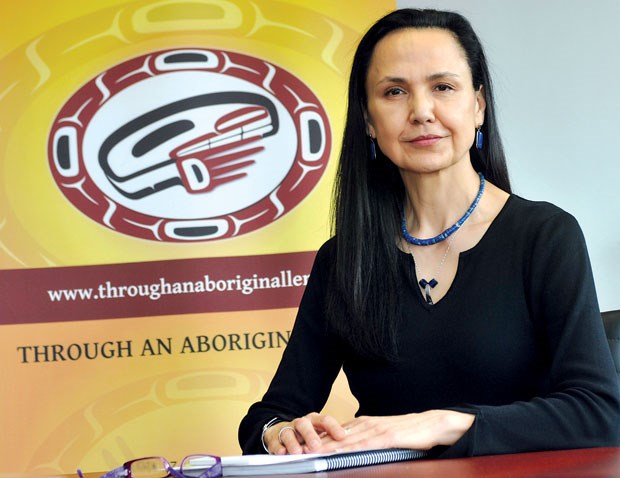Through an Aboriginal Lens, a pilot project from the Native Courtworker and Counselling Association of British Columbia, is working towards creating a better future for youth with a holistic approach. A community knowledge gathering was held on March 31 and April 1 at the Chief Joe Mathias Centre in North Vancouver to raise awareness and support.
The project aims to help at-risk aboriginal youth with fetal alcohol spectrum disorder who have come in contact with the criminal justice system. The approach keeps youth rooted in their culture and community whenever possible by providing support with culturally appropriate resources.
Samaya Jardey, program manager for Through an Aboriginal Lens, says that the systems in place that serve this population of youth doesn’t see eye to eye with the cultural values they are being raised with. This disconnect strains the ability for service providers and the parties involved to come to a resolution. TAL’s position helps strengthen the communication channels and opens the door for a better understanding of the issues at hand.
“When we work with our youth, that’s what we’re doing because they’re in a system, with probation or in with the ministry, that they don’t understand... and there’s a lot of fear in that,” Jardey said. “When I talk about Through an Aboriginal Lens being a bridge, it’s being a bridge in multiple areas. So being a bridge between youth and the community and supporting educating the probation, social services, ministry workers about indigenous culture. Then... supporting the youth and their families understand the system.”
Steven Point, a provincial court judge and former lieutenant–governor of British Columbia, remembers the flood of cases he received when he first started practising law in 1985. When word got out that there was an aboriginal lawyer in the province, indigenous people were dropping their lawyers to be represented by someone they could identify with. Finding that his people were in a crisis, Point took on cases from all over B.C. to represent the best interest of his clients by translating their needs to the justice system.
“My point is that this system that was brought here, the system that we call this adversarial system, the justice system, is not something that Indian people are comfortable with,” said Point. “We come from a different perspective. Aboriginal people have a different lens, one of the things (we’re) talking about today.”
He explained that the difference in world view between British law and indigenous law creates a lot of difficulty for aboriginal people navigating the justice system. The best form of prevention, he says, is to return cultural teachings to the youth to help them understand the values and traditions of their people, restoring confidence and self-worth in this generation.
“There’s a disproportionate number of our youth that don’t have a connection to who they are and where they’ve come from, which is an important value for indigenous people, it’s sacred,” Jardey said. “Our youth who don’t have that connection... that when they turn 19 they’re lost in the abyss of an urban centre, they don’t have a tether that is connecting them to one place... So with our project we work at helping do the research with the youth to find out where they’re from.”
Speaking on behalf of the B.C. government, Minister of Justice and Attorney General Suzanne Anton touched on some of the anti-gang, public safety and rehabilitation initiatives the province provides for at-risk youth. The civil forfeiture program, which takes money, weapons and illegally obtained objects and turns them into a source of funding for anti-gang and violence prevention programs, was highlighted along with outdoor leadership programs that focus on the recognition of aboriginal culture. She emphasized the importance of working with youth before they have entered custody for a higher success rate.
“This is accomplished by promoting the development of law abiding behaviour, and addressing the physical and mental health needs of youth,” she said. “So we’re really looking at how to have permanency for children and to have a better way, particularly for First Nations kids, to have their own nation look after them in some way.”
Encouraged by the amount of support shown throughout the first day of the community knowledge gathering, Point was hopeful that appropriate action would be taken to help improve the young lives of his people.
Jardey looks to continue the work TAL has been providing to aboriginal communities and families by bringing more youth home.



